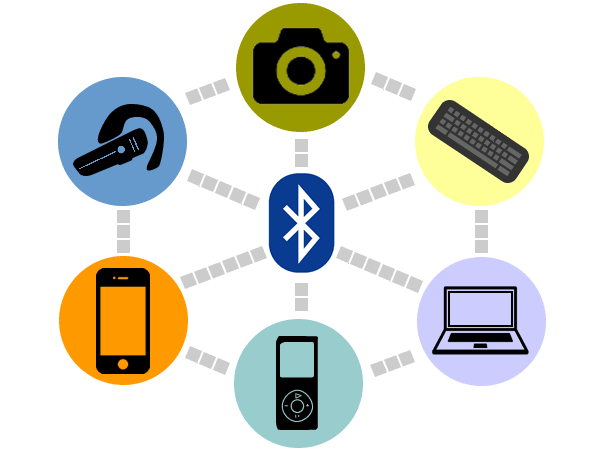With Bluetooth, you can do stuff such as pair up your phone with speakers to enjoy music, transfer and receive files to and from other devices, connect your portless smartphone to wireless earbuds etc. However, there are dedicated “Profiles” that makes it possible for a Bluetooth device to effectively perform its functions. In simpler terms, Bluetooth Profiles are defined wireless interface specifications which allows Bluetooth devices effectively communicate with each other. Ever wondered how you are able to wirelessly stream audio from your smartphone to your Bluetooth speakers, earbuds or soundbar; or how you are able to exchange files with another device using Bluetooth? Then you should have a look at some of the most common Bluetooth Profile there is.
1. Advanced Audio Distribution Profile (A2DP)
Shortly known as A2DP, this profile is responsible for the transmission of high-quality stereo audio from a source (SRC) to a sink (SNK). A source (SRC) is basically the device producing the digital audio while the sink (SNK) is the receiving device within the piconet — a network of devices connected using Bluetooth technology. If you use Bluetooth headphones, earbuds, car stereo, your device uses this profile to ensure the transmission of high-quality audio.
2. Audio/Video Remote Control Profile (AVRCP)
This profile is responsible for the remote control functionality of Bluetooth devices. You’d find this profile on devices such as televisions, headphones, smart speakers, soundbar, smartphones, and other stereo equipment. ACRCP provides the interface which allows your Bluetooth device play and pause music, increase and decrease volume, switch to the next and previous item on your playlist etc. The AVRCP plays vital roles in the controlling device (e.g smartphone) and the target device (Bluetooth headset, speaker etc). When you press a button (play, pauses, next etc.) on the controlling device, the command is detected by the controller using the AVRCP. The profile subsequently converts the command into an A/V control signal which it transmits to the target device.
3. File Transfer Profile (FTP)
As evident in the name, this profile is responsible for the wireless transfer of files and folders between devices (phones, laptops etc.) using Bluetooth. This profiles plays two roles: initiates transfer or retrieval of files both on the client (read: sender) and server (read: receiver) end.
4. Hands-Free Profile (HFP)
As stated in the name, Hands-Free Profile (HFP) is responsible for successfully placing wireless phone calls from a Bluetooth device. You’d find this profile in mobile phones, car infotainment system, headsets, etc. The HFP utilizes a Continuously Variable Slope Delta (CVSD) codec (an encoding is used for data compression of audio signals) for voice transmission and to define some voice control parameters (like volume). If you intend going hands-free while driving or anywhere, your device needs to have this profile.
5. Headset Profile (HSP)
The Headset Profile defines how a Bluetooth-enabled headset interacts and communicates with a Bluetooth device — mobile phone, PCs etc. This profile is also responsible for the way Bluetooth headsets receive phone calls, adjust volume level, switch music etc.
6. Basic Printing Profile (BPP)
When you send files and documents (e-mails, images, texts etc) to a Bluetooth enabled printer from a Bluetooth device, the Basic Printing (BP) profile permits such communication.
7. Human Interface Device Profile (HID)
This profile is commonly used by Bluetooth-enabled peripherals like wireless keyboards, mice, gaming controllers etc. The Human Interface Device profile defines the features and protocols through which these devices communicate with a Bluetooth device. While there are over 20 Bluetooth profiles, the above-mentioned profiles are the most important as they are used in our everyday lives. They are in devices you come in contact with every day: mobile phones, laptops, headsets, peripherals, printers, cars, smart home appliances etc.

